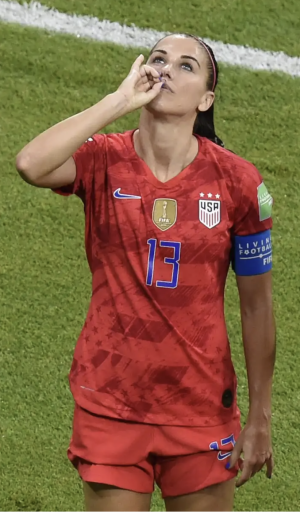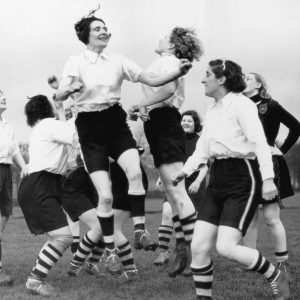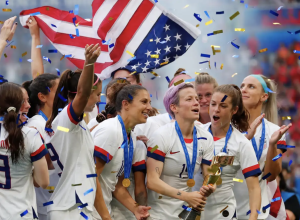Debunking Myths About Women’s Soccer
December 20, 2022

On December 1, 2022, CNN Anchor Don Lemon defended the pay gap between the U.S men’s and U.S women’s national soccer teams. Contrary to Lemon’s opinion, female athletes deserve equal pay, media coverage, and resources for equal work.
In one statement, Lemon said, “The men’s team makes more money because people are more interested in the men!”
Lemon makes two claims here. The first claim is that male players earn more money because their team makes more revenue. This point is flat out wrong.

According to CNBC, U.S women’s soccer players receive less money, but their games generate greater revenue than men’s.
For instance, in 2016, U.S. women’s games produced $1.9 million more in profit than the U.S. men’s games. From 2016 to 2018, U.S. women’s games produced around $50.8 million in profit compared with $49.9 million for the U.S. men’s games.
Yet, from 2013 to 2016, women players earned $15,000 for making the national team while the men earned $55,000 in 2014 and $68,750 in 2018. Therefore, the problem is not with revenue but with gender bias.
Lemon’s second point is that more people are interested in the male players. In terms of fan’s enthusiasm, Lemon omits important history.
According to History of Soccer, men were encouraged to pursue athletic endeavors, wheres women faced discrimination, thereby influencing the fan base.

Since the establishment of soccer, men have been praised for playing the sport. Thus, their fandom is more organic and built-in. On the other hand, women faced adversity and targeted backlash.
For example, in the United Kingdom, women organized their own soccer matches to raise money for soldiers in WWI. On Boxing Day, 1920, a match between Dick, Kerr Ladies, and St Helen Ladies attracted 53,000 spectators. The extraordinary turnout triggered the banning of women’s soccer.
Quite literally, “interest” in the women’s soccer game led to the ban of women’s soccer. Deeming the game “unsuitable for females,” the Football Association of England (FA) would not lift the prohibition for 50 years.

In 1972, one year after the FA removed the ban on women’s soccer, U.S. Congress passed Title IX, in which gender equality became mandatory in education and collegiate athletics. Though college soccer became increasingly popular, women confronted limited opportunities to go professional. It was not until incredibly recently, 1995, that the U.S. Soccer Federation launched the first U.S. women’s soccer league.
Without the historical context, it is easy to proclaim that more people are captivated by male soccer. Not long ago, men actively created barriers to stamp down on interest in women’s soccer.
Lemon’s additional comment was, “Women are better skilled against better other women, but if the women played the men, they wouldn’t be winning the way that they win.”

According to Jane English’s article Sex Equality in Sports, sports were designed to fit the physical abilities of men, not women.
From a young age, girls are confronted with the argument that boys are, by nature, faster, stronger, and taller. What is not discussed are the traits women bring to the table.
English writes, “Speed, size, and strength seem to be the essence of sports. Women are naturally inferior at ‘sports’ so conceived. But if women had been the historically dominant sex, our concept of sport would no doubt have evolved differently. Competitions emphasizing flexibility, balance, strength, timing, and small size might dominate Sunday afternoon television and offer salaries in six figures” (226).
Moreover, sports are designed to support a system that values male genetics over female genetics. It is fundamentally unreasonable to compare male and female competition because the system is pre-designed to give men the upperhand.
Despite Lemon’s comments, the U.S. women’s team accomplished a great victory in September.

In a New York Times article, assistant editor in Sports Andrew Das said, “Under new contracts, men and women will for the first time be paid at the same rate for representing the United States in international soccer matches and tournaments.”
After the six-year fight for equal pay, the U.S women’s soccer players will see an increase in their compensation. Hopefully, this decision will influence other athletic organizations to follow suit.
In a Today article by Scott Stump, U.S soccer star Megan Rapinoe speaks about their achievements: “For us this is just a huge win in ensuring that we not only right the wrongs of the past but set the next generation up for something that we could only have dreamed of.”




Cessa • Dec 27, 2022 at 3:04 pm
Ale, I learned so much from reading this article. Thank you for educating the community on this important topic. Next Feminism club discussion?